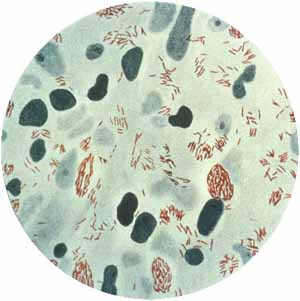So, I'm giggling to myself, pushing my food around in the bowl thinking, "how can I write a blog entry about things that are already halloween-esque?" This is a challenge for me, because I am not a fan of horror films. I know, you'd think someone who dedicates their life to viruses, parasites, and other creepy crawlies would be excited by the thought of paying $12 to go watch two hours of ghouls and scantily-clad ladies screaming... but I'm not.
Then I found this list of the 10 Scariest Horror Movie Characters (also on Buzzfeed, which is oddly addicting if you avoid all the celebrity gossip and pseudo health advice). While I have only seen one of these movies, I think I can match all of these horror movie characters with real horror. So here we go...
1. Exorcist Girl? Ebola
Sure, I haven't seen this movie, but I can recognize all the references from pea soup to spinning heads. There are parasites that take over their hosts' brain functions, but that's mostly seen in smaller animal models or with prion diseases (which are not parasites). Want to read about Ebola? Check out one of my past entry here.
2. Leatherface? Leprosy.
Leprosy is a really unfortunate infection that is fortunately curable when discovered early. Read up on it here.
3. Creepy Girl from Quarantine? Hookworms.
Nothing says sexy like gnashing teeth.
4. Jason Vorheese? Primary Amoebic Meningoencephalitis
Both Jason and Primary Amoebic Meningoencephalitis are found lurking in lakes and pools of water, and both will make you crazy.
5. Old Man from The Unborn? Hobo Spiders.
My partner called my attention to these baby hand-sized wonders. Apparently, he used to wake up to them crawling on his chest, and the males also are very territorial and will charge at you and chase you around a room.
6. Pennywise from It the Clown? Tapeworm.
Both Pennywise the Clown and tapeworms lives amongst poop and eat your insides. The similarities are uncanny! Read about fun tapeworms here!
7. Freddy Kruger? Bedbugs.
...because they get you in your sleep! Here's an older post about bedbugs that will make you want to sleep with one eye open.
8. The Girl from the Ring? Onchocerciasis.
Onchocerciasis is the clinical term for "River Blindness", which is a disease caused by an infectious roundworm. This one is a bit of a stretch, I know, but that girl has creepy eyes.
9. Michael Meyers? MRSA.
One of the latest things in medical news is drug resistance. Much like Michael Meyers, MRSA just wont die!
10. Old lady from Legion?
Three Words: Ellen Albertini Dow
Happy Halloween!












































